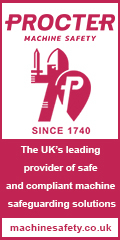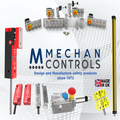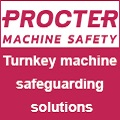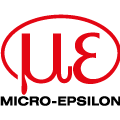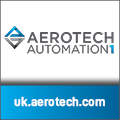
Posted to News on 7th Sep 2016, 15:59
Soft starter or variable speed drive for your motor?
Motor starting can induce shock loads into the driven equipment and harmonic disturbances into the main supply. Jerry Hodek of Exico Electric Motors says both variable speed drives and soft starters will help reduce this effect and explains which option best suits an application.
When an induction motor is switched on, there is a high inrush current from the mains to the motor which may, especially if the power supply is inadequate, cause a momentary under-voltage. This can affect other machines and equipment running on the same power supply. The voltage drop is usually noticeable in lighting equipment as the light intensity reduces.
This can also cause problems in that the motor and driven equipment are likely to be momentarily shock loaded, which may lead to increased wear and tear or even actual damage to the driven equipment. Both soft starters and variable speed drives can be used to reduce the inrush current, thereby limiting both the mains corruption and the excessive torque. But which of these should you choose?
A soft starter is based on solid state semiconductors and works by reducing the terminal voltage on two or three of the supply's three phases and therefore controlling the inrush current. This allows the speed of the motor to be ramped up more gradually, thus reducing the effects of uncontrolled torque. It also means there is less corruption of the mains and therefore reduced "white noise' and associated disruption on the supply side.
It is also worth noting that a soft starter can provide a soft stopping effect, protecting the motor, drive train and driven machinery from sudden decelerations and "hard stops'.
A variable speed drive (VSD) is a motor control device that, like a soft starter, also works to minimise the effects of current in rush during periods of acceleration. Their speed control capability makes them more sophisticated than soft starters and, in vector control mode, they can create speed profiles based on a timing schedule or real-time feedback from sensors.
Variable speed drives are also referred to as inverters, because they use power semi-conductors to invert the negative half of the mains AC waveform and interleave it with the positive half to create, after smoothing through capacitors, a DC current. Using pulse width modulation (PWM) techniques the DC current can then be changed back to AC with a different frequency - which will make the motor turn at a different speed.
Soft starters are often significantly lower in cost than drives, easier to install and set up and can be more compact. This makes them the natural choice for applications that require speed and torque control during motor start up, but otherwise are fixed speed applications.
There are applications where motors are switched on and off relatively frequently, and these are becoming increasingly common as people look to reduce wastage of energy by leaving machinery running when it is not in use. In such cases, fitting a soft starter is good practice because the repeated in rush currents are likely to take a toll over time.
Some machines, such as conveyors and mixers, or those driven through a belt or chain drive may be damaged by excessive sudden tension at direct on line start up. The controlled ramping up to drive speed afforded by a soft starter is therefore very beneficial.
For systems using pumps, water hammer can be induced into the distribution pipework if a pump starts suddenly. A soft starter on the pump's motor will minimise, if not eradicate, this problem.
Additional benefits of the VSD
A drive will provide all of the above benefits attributed to a soft starter. However, its speed control capabilities bring substantial extra benefits.
Its ability to create controlled starting, stopping, acceleration and deceleration means sophisticated speed profiles can be set up. For instance, a mixer could be set up to start very slowly and ramp up gradually to half speed, then accelerate quickly up to full speed and hold that for a set period. Deceleration could then be relatively quick down to a slow speed that would allow emptying before finally stopping.
Other industrial equipment will use multiple sensors to measure parameters than can affect the optimum speed for a motor. A control algorithm can monitor these and constantly adjust the motor speed setting in line with changing conditions.
Drives can be used to synchronise two or more machines so that they work together perfectly. Sensor feedback will constantly fine tune the synchronisation, thus adapting to real-time condition changes.
Another popular use for drives is to provide smooth movement in escalators and moving walkways. Because such equipment can use a lot of energy they are increasingly using their drives to stop when people are not using them and also to speed up during periods of heavy use.
Passenger lifts in very tall buildings can use drives to adopt different speed profiles depending on the length of each journey. A long journey needs to be completed at high speed, while one of only a storey or two is better done more modestly - either way, smooth acceleration and deceleration are essential for passenger comfort and confidence. Also a single person in a lift car represents a substantially different load than a rush-hour crowded car, another variable that a drive can readily accommodate.
In fact, drives can be fitted to the motors in pumps, fans, security barriers and other building control equipment, so that their operation can be optimised to changing circumstances. If this optimisation is carried out continuously by a computer that is monitoring conditions via sensors, building and environmental control can be fully automated.
However, one of the most significant advantages is the reduced energy consumption. The power drawn by a motor is proportional to the cube of its speed; hence reducing the speed slightly will save a lot of power. In addition, many motors are required to operate only intermittently, so a drive can be used to turn them off (or down to a very slow idle speed) for large parts of their duty cycle.
Drives often have their own on-board intelligence capabilities, so can run software, protect their motors from overloads, self diagnose conditions and communicate with control computers.
From the above we can conclude that soft starters protect motors, machinery and the mains and they are low cost and compact in dimensions. However, drives provide the same protection, and have many other very useful capabilities. If you are considering fitting a soft starter, it may be worth upgrading to a drive because the benefits can be great. Also it is probable that energy savings generated by a drive will recoup the additional cost over a soft starter.
For more information please visit www.exico.co.uk.
Want the latest machine building news straight to your inbox? Become a MachineBuilding member for free today >>
4 Stanton Close
Finedon Road Industrial Estate
NN8 4HN
UNITED KINGDOM
+44 (0)1933 277930



